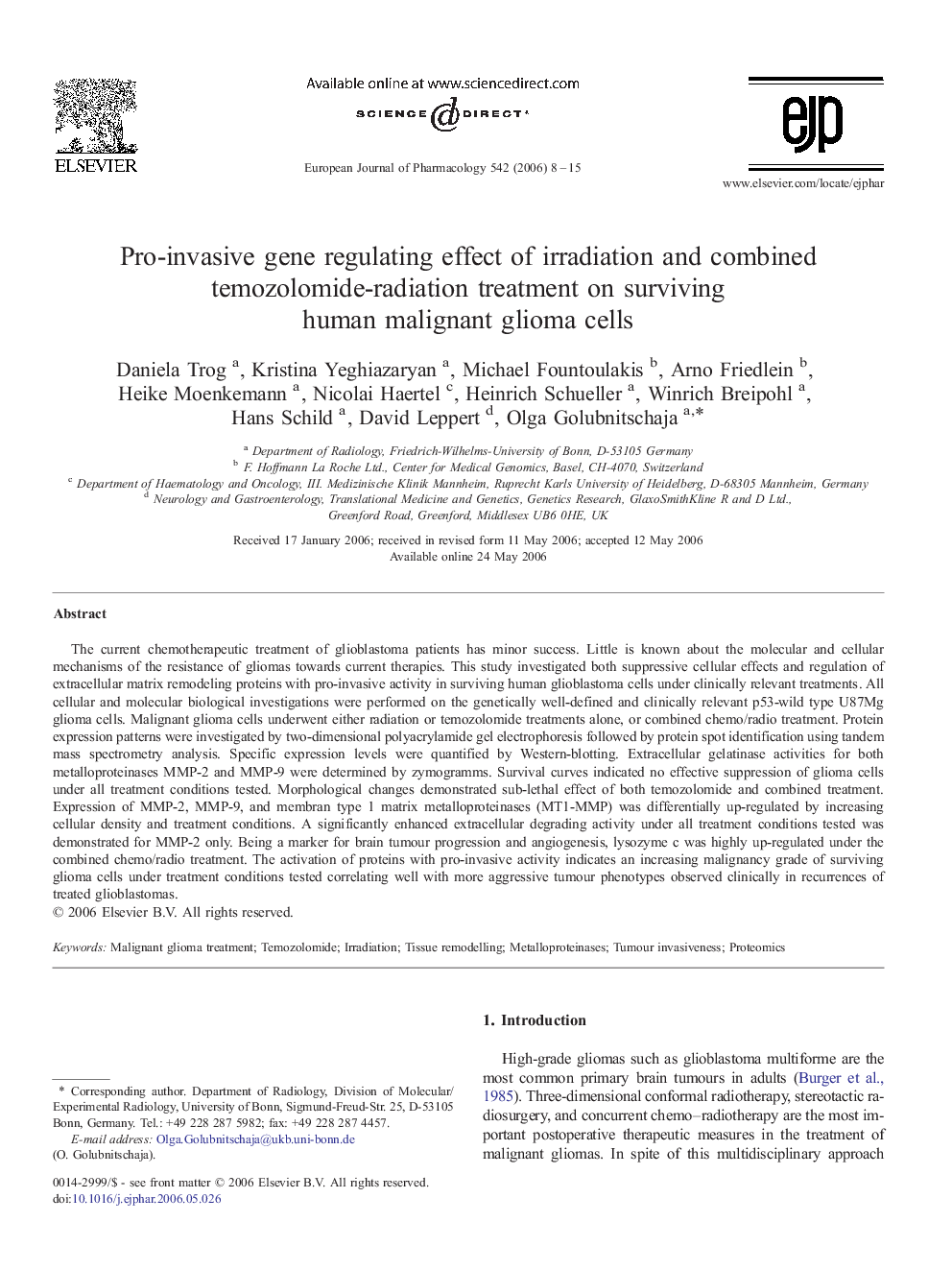| Article ID | Journal | Published Year | Pages | File Type |
|---|---|---|---|---|
| 2537028 | European Journal of Pharmacology | 2006 | 8 Pages |
The current chemotherapeutic treatment of glioblastoma patients has minor success. Little is known about the molecular and cellular mechanisms of the resistance of gliomas towards current therapies. This study investigated both suppressive cellular effects and regulation of extracellular matrix remodeling proteins with pro-invasive activity in surviving human glioblastoma cells under clinically relevant treatments. All cellular and molecular biological investigations were performed on the genetically well-defined and clinically relevant p53-wild type U87Mg glioma cells. Malignant glioma cells underwent either radiation or temozolomide treatments alone, or combined chemo/radio treatment. Protein expression patterns were investigated by two-dimensional polyacrylamide gel electrophoresis followed by protein spot identification using tandem mass spectrometry analysis. Specific expression levels were quantified by Western-blotting. Extracellular gelatinase activities for both metalloproteinases MMP-2 and MMP-9 were determined by zymogramms. Survival curves indicated no effective suppression of glioma cells under all treatment conditions tested. Morphological changes demonstrated sub-lethal effect of both temozolomide and combined treatment. Expression of MMP-2, MMP-9, and membran type 1 matrix metalloproteinases (MT1-MMP) was differentially up-regulated by increasing cellular density and treatment conditions. A significantly enhanced extracellular degrading activity under all treatment conditions tested was demonstrated for MMP-2 only. Being a marker for brain tumour progression and angiogenesis, lysozyme c was highly up-regulated under the combined chemo/radio treatment. The activation of proteins with pro-invasive activity indicates an increasing malignancy grade of surviving glioma cells under treatment conditions tested correlating well with more aggressive tumour phenotypes observed clinically in recurrences of treated glioblastomas.
